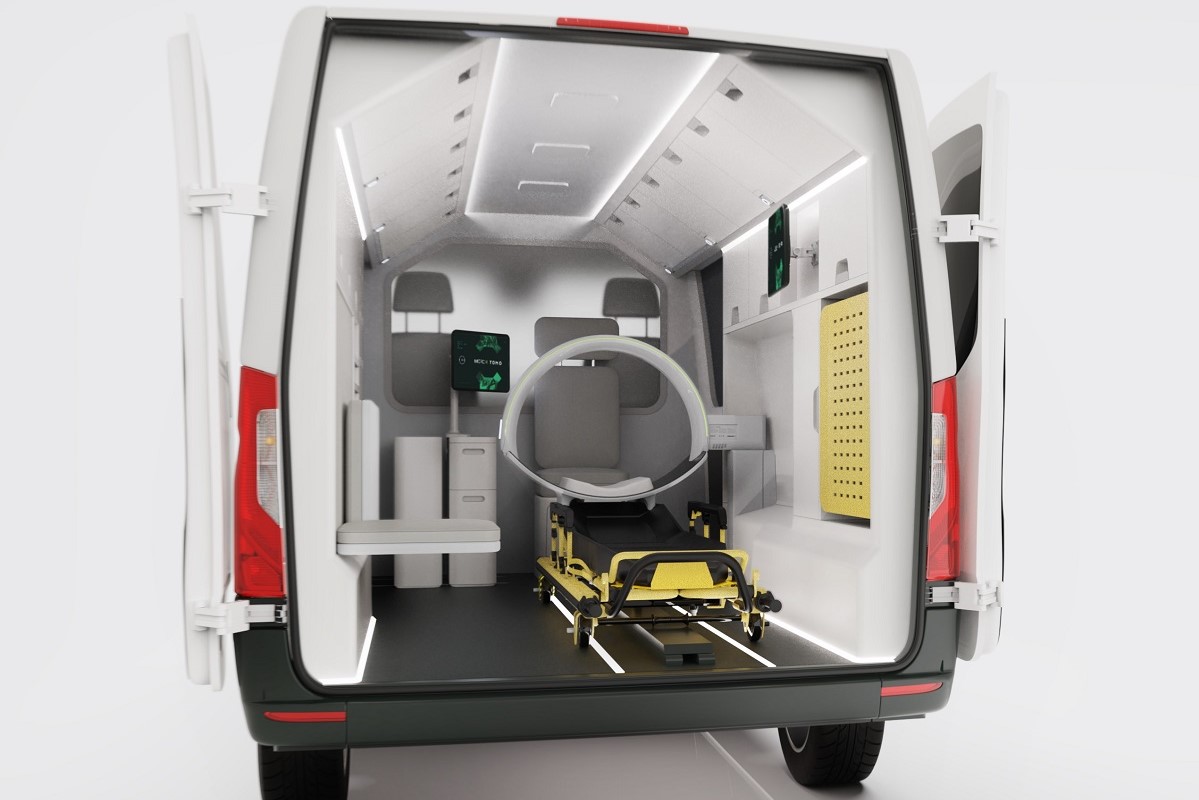
Stroke, a small CT scanner on ambulances and helicopters to aid rapid diagnosis
Stroke diagnosis: Adelaide company Micro-X (MX1) has started developing a small CT brain scanner that can be fitted in ambulances and emergency aircraft
The device will allow paramedics and rescue teams to diagnose and then start treating stroke patients in the golden hour
If successful, the device will allow paramedics and retrieval teams to diagnose and then start treating stroke patients in the golden hour – the first hour after a stroke.
Today Micro-X signed a Project Agreement that will unlock $8 million of funding from a $40 million grant awarded to the Australian Stroke Alliance under the Australian Government’s Frontier Health and Medical Research initiative.
The funding will contribute to the development of the scanner for patient imaging trials in 2023.
THE BEST STRETCHERS ON THE MARKET? THEY ARE AT EMERGENCY EXPO: VISIT THE SPENCER STAND
The importance of rapid diagnosis: this year, stroke will affect more than 15 million people worldwide
5 million will die and another 5 million will be permanently disabled.
In Australia, there are about 38,000 stroke events annually, or more than 100 a day.
“Your best chance of surviving a stroke lies in the first hour after the attack – the so-called “Golden Hour,” Professor Stephen Davis, AO, from the Australian Stroke Alliance, said.
“Detecting and starting treatment within that timeframe gives patients a much better chance of surviving and recovering with limited brain damage,” he said.
“This scanner would allow us to determine the type of stroke in minutes and start treatment on the way to hospital,” Graeme Rayson, Operations Manager, SA Ambulance Service (SAAS), said.
“An aeromedical stroke unit would potentially save hours in time to diagnosis for remote patients, enabling our teams to fly to a community, scan the patient and start treatment immediately on the plane en route to a hospital,” Dr Mardi Steere, Executive General Manager of Medical and Retrieval Services, Royal Flying Doctor Service (Central Operations) said.
While some health services have Mobile Stroke Units (MSUs) – fully-equipped, custom-built specialist vehicles that accommodate a built-in, conventional CT scanner and specialist acute stroke personnel – these cost more than $1 million each and require reinforcement to support the weight of the CT scanner plus they are dedicated to stroke imaging.
These have delivered good patient outcomes, but the conventional CT technology’s size, weight, cost and workflow mean MSUs will always be relatively rare, particularly in rural and regional communities.
DEFIBRILLATORS, VISIT THE ZOLL BOOTH AT EMERGENCY EXPO
Rapid diagnosis: Micro-X’s technology has the potential to turn every ambulance into a stroke-capable ambulance
“We have invented an electronic X-ray tube” said Peter Rowland, Managing Director of Micro-X.
“It’s already in use in mobile X-ray units in hospital emergency and ICU rooms.
We will create a small arc using a number of these patented X-ray tubes, and a curved detector developed in partnership with Fujifilm, to create a compact and robust CT scanner with no moving parts that could be installed in every ambulance” he said.
The project is made possible thanks to Micro-X’s carbon nanotube (CNT) emitter technology.
Micro-X has successfully completed initial imaging studies with the Melbourne Brain Centre.
The second stage of the collaboration will continue the development and refinement of the device with the intention of conducting patient imaging trials in approximately three years.
Micro-X will build on established relationships with Fujifilm, the Johns Hopkins University in Baltimore, USA, the MADA Monash University Health Collab team and the Melbourne Brain Centre at Royal Melbourne Hospital.
Micro-X is also sending an employee to the Johns Hopkins University as a PhD candidate from Flinders University for three years.
“We are excited to be at the forefront in developing technology which has the potential to radically transform health care for all Australians,” Rowland said.
“This unique collaboration puts Australia and the Australian Stroke Alliance at the forefront of global best practice in stroke care which may be adopted as the new standard for stroke diagnosis and management,” Professor Stephen Davis, AO, from the Australian Stroke Alliance, said.
Read Also:
Obsessive-Compulsive Disorder May Triple Stroke Risk
Quickly Finding – And Treating – The Cause Of A Stroke May Prevent More: New Guidelines


